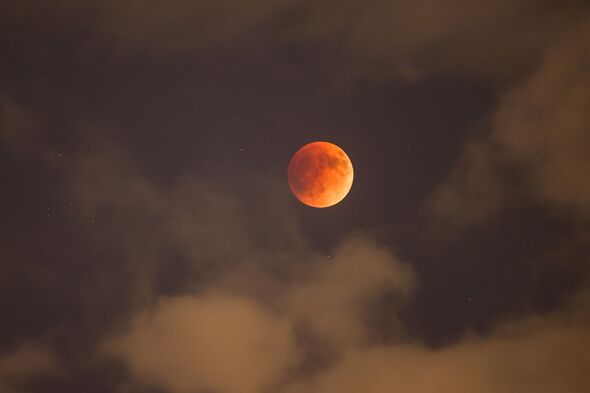First blood moon total lunar eclipse since 2022 may be impossible for millions to see
Millions of Americans might be left disappointed by bad weather next week as they attempt to view the first blood moon total lunar eclipse since 2022.

A rare total lunar eclipse that will result in a blood moon is slated to take place in the late-night and early morning hours of March 13 and 14 — but millions of prospective viewers might miss out on seeing the phenomenon because of cloudy and stormy weather, forecasts reveal.
Several times every decade, the moon passes through Earth's shadow and changes from white to blood red, according to AccuWeather. It's a phenomenon astronomy enthusiasts generally look forward to viewing — but they might be out of luck this year.
A "massive" storm is reportedly moving in from the Pacific Ocean and is expected to dump rain and mountain snow on several regions and bring clouds to the West Coast and Rocky Mountains as well as some regions of the northern Plains — right in the path of the total lunar eclipse.
- Iran’s leader issues chilling 4-word response to Trump’s nuclear talks offer
- Greenland's 3-word reply after Trump vows 'we're going to get it'
"The best weather conditions to enjoy the total lunar eclipse are expected from Texas to the Ohio Valley as well as southern Florida," AccuWeather meteorologist and astronomy expert Brian Lada said.
He added that partly cloudy conditions are anticipated across much of the Southeast, East Coast and even into regions of Canada, including Ontario, Quebec and Atlantic Canada.

But, there's good news, Lada said: "The total lunar eclipse will last for more than an hour, much longer than the total solar eclipse last April, which lasted less than five minutes along the path of totality. You only need a few breaks in the clouds to witness the total lunar eclipse."
Where will the total lunar eclipse be visible?
The total lunar eclipse will be visible from both North and South America — and even a few areas of western Europe, western Africa and New Zealand, but only briefly and if the sky is clear.
The path of the eclipse is slated to be wide, encompassing the entirety of both continents — unlike the narrow path the April 7, 2024, total solar eclipse took, which was just 115 miles wide.
When can I see this lunar eclipse?
The lunar eclipse slated to take place next week will be visible at approximately 2:58 a.m. on March 14 on the East Coast, which equates to 11:58 p.m. on March 13 on the West Coast.
Viewers wishing to witness the spectacle will have to stay up late or travel to another part of the world to view the next lunar eclipse.

The next lunar eclipse visible from North America will be on March 3, 2026, with the best views expected over the western U.S. and Canada.
What happens if I miss this lunar eclipse?
This will be the first of two total lunar eclipses in 2025, according to AccuWeather. But, it will be the only one visible from North America.
The second total lunar eclipse is sltaed to take place overnight on Sept. 7 and 8, and it will be visible over Asia, Australia and some parts of Africa and Europe.
What is a lunar eclipse?
A lunar eclipse, simply put, occurs when the Moon passes directly through Earth's innermost shadow, placing Earth between it and the Sun.
Unlike solar eclipses, which have a narrow path, most lunar eclipses can be seen across half of the entire globe. But even though the Moon is passing through Earth's shadow, it doesn't go dark — instead, it appears dark red or rusty orange with the occasional hues of blue.
The change in color can be attributed to light passing through Earth's atmosphere, which is refracted as shorter wavelengths of light are filtered out. That allows for longer red and orange wavelengths to reach the Moon, which gives it a distinctive blood-red color.
The color the Moon turns can be difficult to predict, according to AccuWeather, and is dependent on a number of factors, including conditions in Earth's atmosphere, such as dust, pollution, clouds or extra particles in the sky from recent volcanic eruptions or other similar events.
